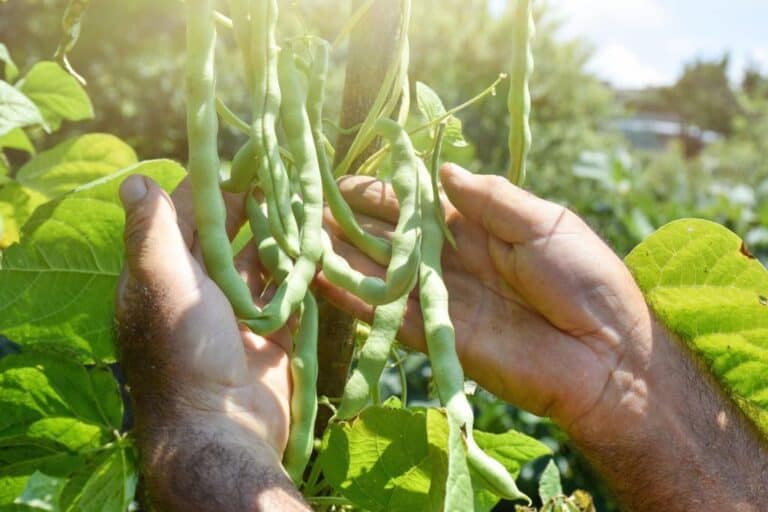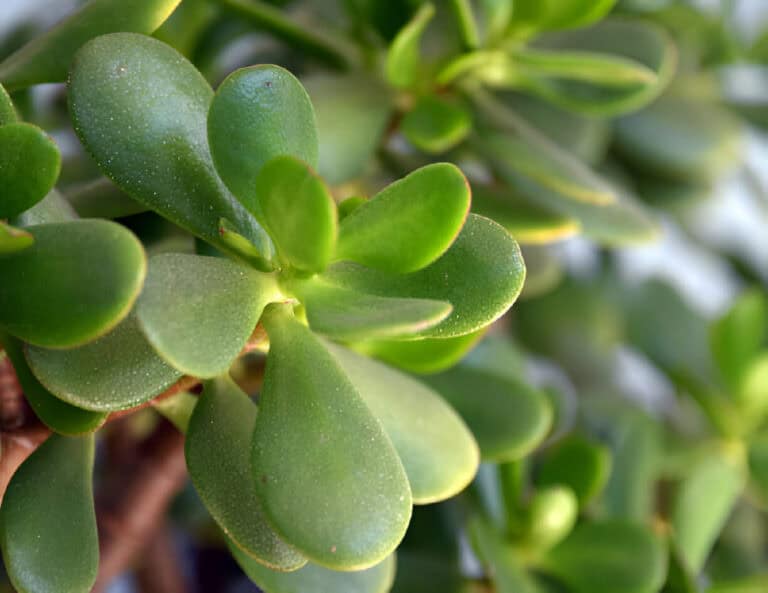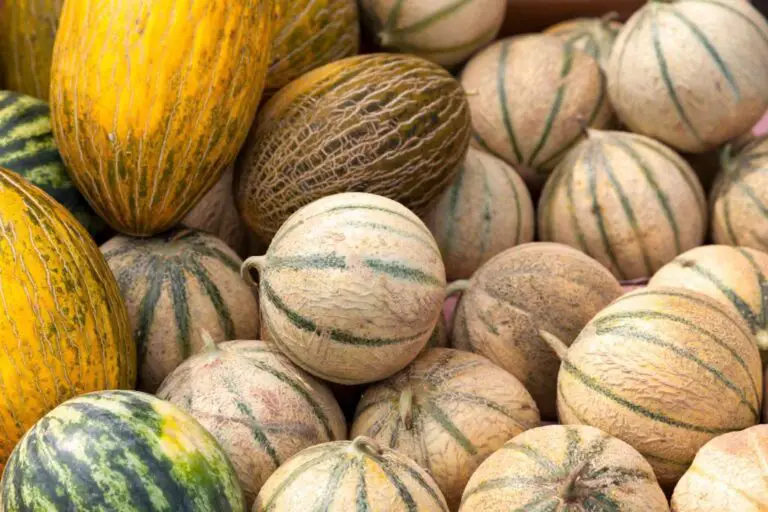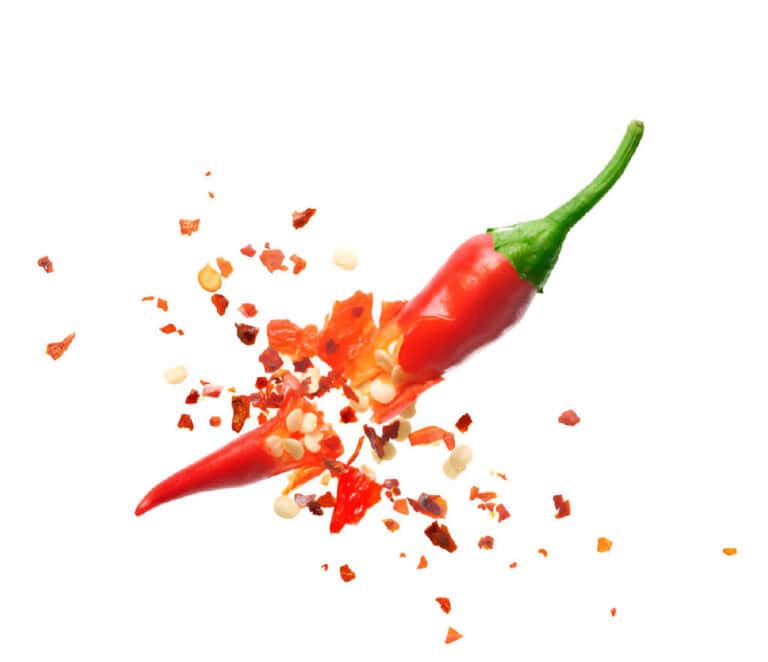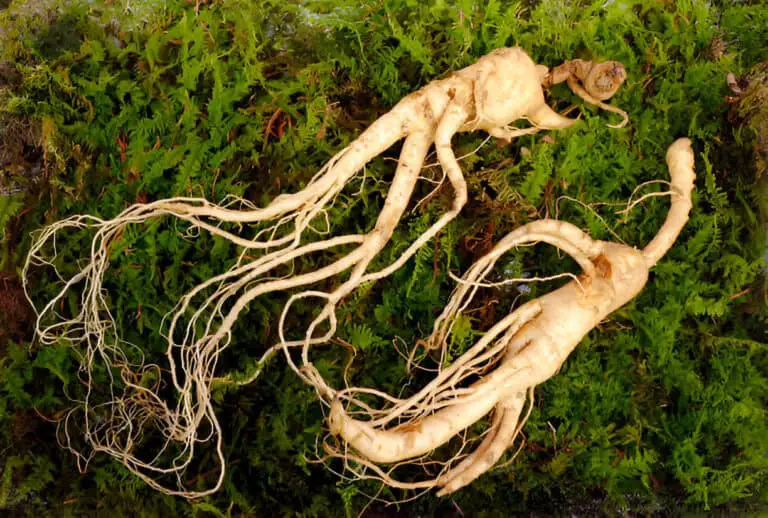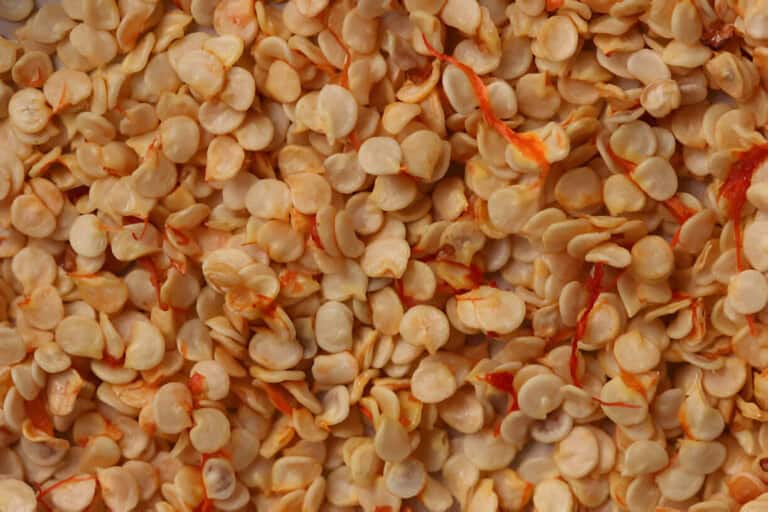Brussel Srouts Growing Stages (with Pictures): Plant Life Cycle & Timeline
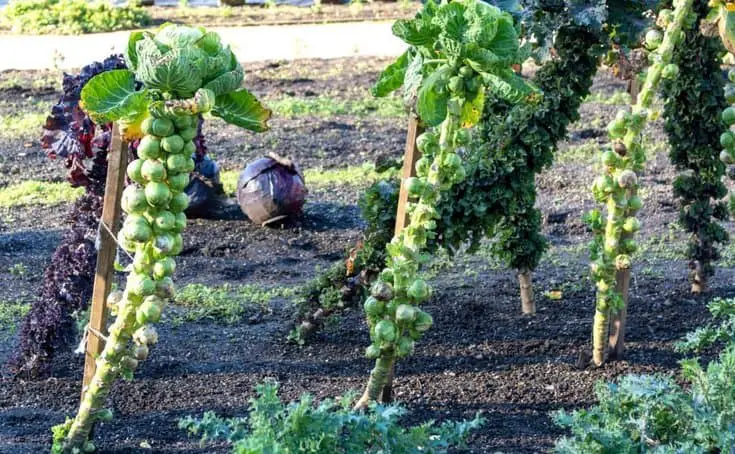
When many people think of brussel sprouts, they think back to their childhood when their parents forced them to eat that round, green vegetable. Brussels sprouts are a nutritious and tasty vegetable, but do you know the stages of brussel sprout growth throughout their life cycle?
In this blog post, we will delve into the growth stages and life cycle of Brussels sprouts and explore how fast these tasty little greens really grow.
Whether you’re a seasoned gardener or just starting out, understanding the growth cycle of Brussels sprouts will help you grow them successfully in your own garden. So, let’s dive in and discover how these little cabbages go from seed to plate!
Brief Overview of Brussels Sprouts and Their Growth Cycle
Brussels sprouts (Brassica oleracea var. gemmifera) are a type of brassica vegetable that are related to cauliflower, broccoli, and cabbage. They are typically grown as a cool-season crop and are known for their small, edible sprouts that grow along the stem of the plant.
Brussels sprouts are a hardy vegetable that can tolerate frost and light freezes and are typically planted in the spring or early summer for a fall harvest. In mild climates, they can be planted in the fall for a spring harvest.
They require a long growing season and a cool climate. They are typically planted in soil that is rich in organic matter and well-draining.
They are also heavy feeders, and regular fertilization throughout the growing season is important to ensure healthy growth and development.
The growth cycle of Brussels sprouts can be divided into several stages, including germination and seedlings, vegetative and reproductive, harvest and post-harvest stages, dormancy and second year growth.
Each stage has its own needs and traits that you need to know about in order to grow plants successfully.
The rate at which Brussels sprouts grow depends on things like the temperature, the amount of water available, and the amount of light. It can take anywhere from 70 to 120 days for the Brussels sprout to be ready for harvest.
Brussel Sprout Growth Stages Life Cycle
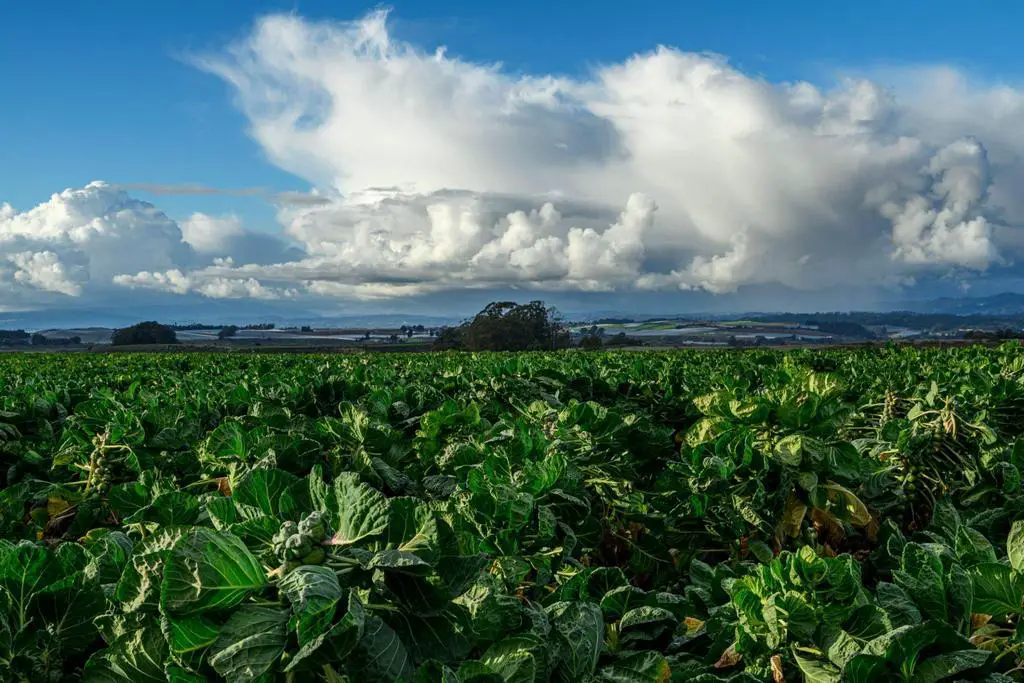
1. Germination and Seedling Stage
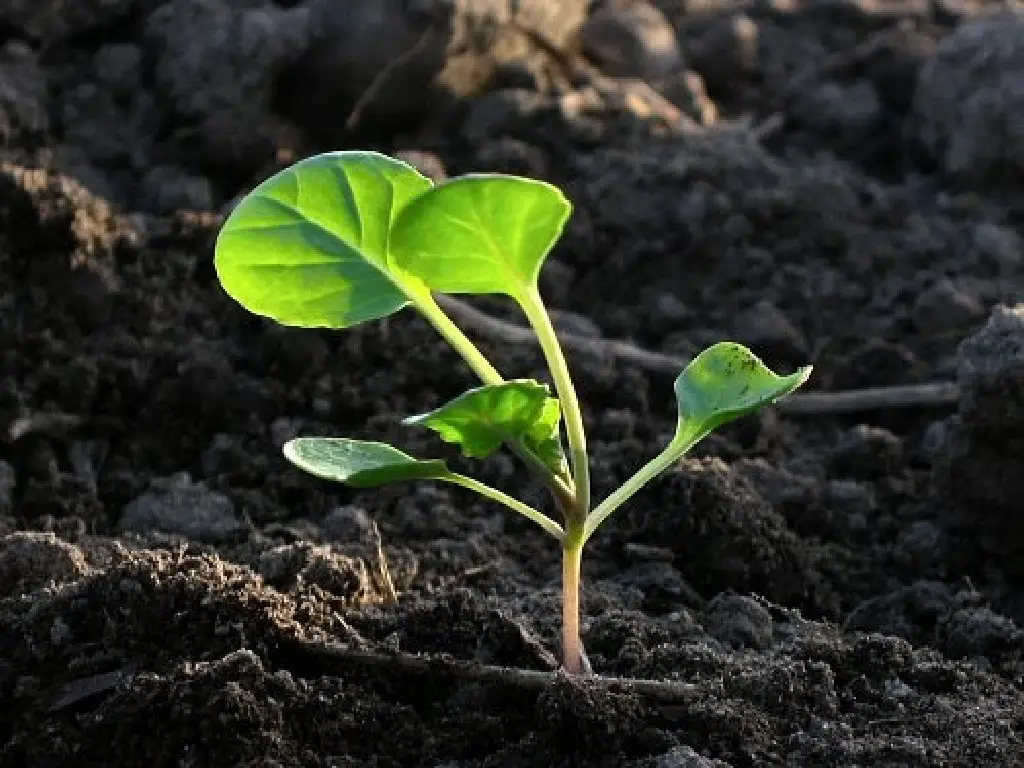
The germination and seedling stages of Brussels sprout growth begin when the seed is planted in the soil. Brussel sprouts grow from seeds, and for the seeds to germinate, the soil temperature needs to be between 45 and 850 °F. They prefer a soil pH of 6.0–7.5 and to grow in an area of full sunlight and abundant moisture.
Sprout seeds typically take between five and eight days to germinate after being planted. After the seed sprouts, it starts to grow a taproot and a stem so that it can get more water, food, and sunlight.
The first two leaves that grow from the stem are called the “seed leaves” or cotyledons. With these first leaves, the plant can take in light and use photosynthesis to turn it into energy.
During this stage, the seedling grows quickly as it gets used to being in the soil and starts to make roots. The seedling will continue to grow taller, and additional leaves will begin to develop. The growth rate at this stage is relatively fast, and the seedlings can grow several inches in a short period of time.
During the germination and seedling stages, gardeners should keep the soil moist, but not soggy, and make sure the seedlings get enough sunlight. This is an important stage, as failure to germinate or reach the seedling stage will be the main reason for not having a successful harvest.
The next leaves that grow out of the stem will be “true leaves” and will be the shape that the rest of the leaves on the plant will be.
2. Vegetative Growth Stage
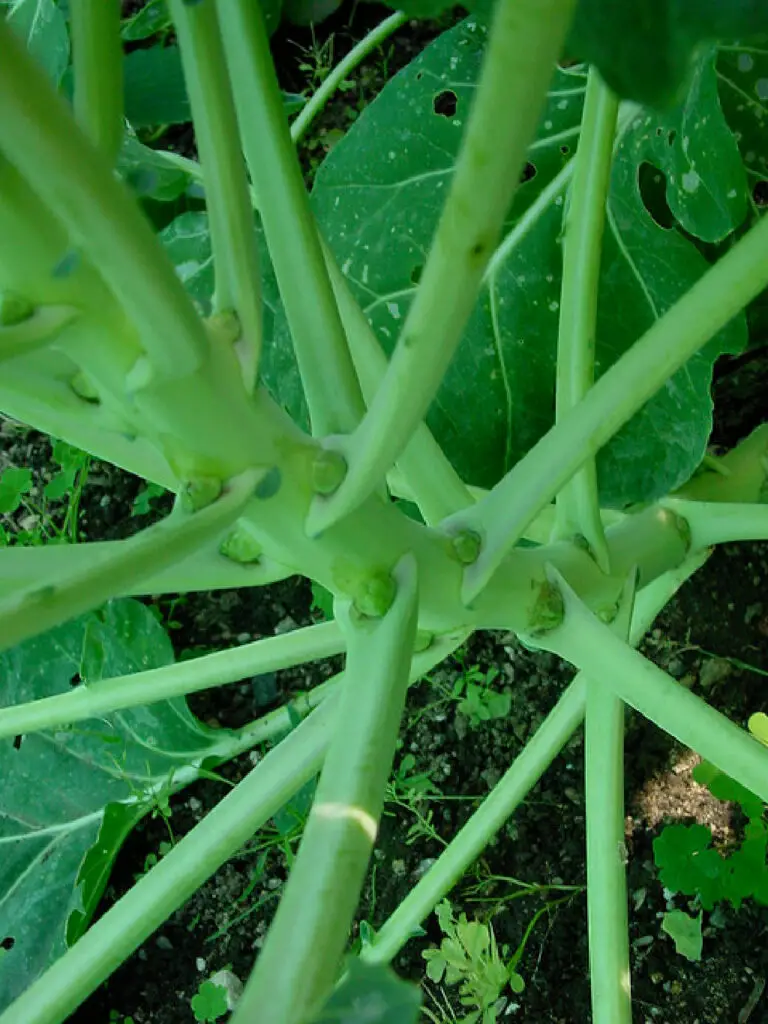
After the seedlings have grown a strong root system and a few leaves, they enter the stage of growth called “vegetative.”
During this stage, the plant will focus on producing new leaves and stems rather than sprouts. The rate of growth will be moderate and more consistent, and the plant will continue to get taller.
The heads of the Brussels sprouts continue to fold onto each other until they have fully formed, where they then loosen up to make room for the seed stalk to develop.
There are specific conditions needed for this action to be performed: certain temperatures, daylight, and growing conditions that are different for each variety of Brussels sprout.
Water availability is also important during this stage. Brussels sprouts need a consistent amount of water to grow well, and the soil should be kept moist but not soggy. Drought stress can cause the plant to become stunted and produce smaller sprouts.
The leaves on the plant will be dark green, and the stem will be thick and sturdy. This is the stage where the plant will become bushier and taller. As the plant grows taller, it will require staking or caging to support its weight.
Once the seed stalk begins to form in this life cycle stage, the plant will shoot up in height and flower at the top, reaching two to three feet. What we call Brussels sprouts begin to form and mature on the seed stalk. These sprouts grow on the stalk until they are about one to one and a half inches in diameter and ready for harvest.
3. Reproduction Stage
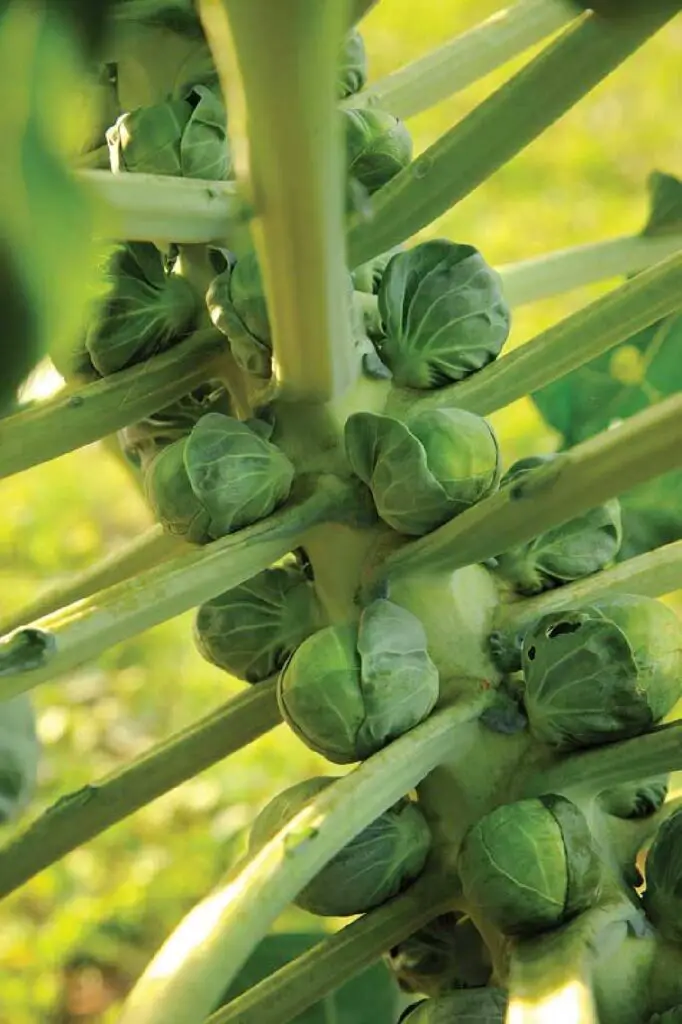
The reproductive stage of Brussels sprout growth begins when the plant begins to form buds along the stem. The small, edible sprouts that are typical of Brussels sprouts will grow from these buds in time.
During this stage, the rate of growth will slow down as the plant’s energy is directed towards the development of the sprouts.
Temperature is still an important factor during this stage. Brussels sprouts prefer temperatures between 60-65°F (15-18°C) during the day and 40-45°F (4-7°C) during the night. If temperatures get too high, the sprouts may become tough and bitter.
Light availability also plays a role in the development of the sprouts. Brussels sprouts require a consistent amount of light to form healthy sprouts. If the plant is grown in too much shade, the sprouts may be small and poorly formed.
As the sprouts grow, the leaves on the plant will begin to yellow and die back. This is normal and indicates that the plant is nearing maturity. The sprouts will be ready for harvest when they are firm and have reached their desired size.
Brussel sprout plants reproduce through seeds, which require sexual reproduction. The flower that the plant grows needs pollination from insects or pollen in the wind. Brussel sprouts and other plants in their family can be direct-seeded or transplanted, with the latter being the preferred method, in order to ensure germination under optimal conditions.
4. Harvest and Post-Harvest Stage

The harvest and post-harvest stages of Brussels sprout growth begin when the sprouts have reached maturity and are ready to be harvested.
The timing of the harvest is important for both yield and quality. Brussels sprouts in their final stages of life cycle should be harvested when they are firm and have reached their desired size. If the sprouts are allowed to become too large, they may become tough and bitter.
Temperature also plays a role in the quality of the sprouts. When Brussels sprouts are frozen or exposed to frost, they lose their taste and texture. It is important to harvest the sprouts before the first frost.
After harvest, the sprouts should be handled carefully to avoid bruising or damage. They can be stored in a cool, dark place, such as a root cellar or refrigerator. They will keep for several weeks if stored properly.
Methods like freezing, canning, pickling, and fermentation can be used after the harvest to keep the sprouts fresh for longer and make them available to eat throughout the year.
5. Dormancy and Second Year Growth
Brussels sprouts are biennial crops, which means that they will continue to grow for up to two years. Most gardeners and commercial growers grow the crop as an annual. To get a good harvest from the second growing season, “bolting” will need to be managed well.
“Bolting” is when a premature seed stalk grows in the first year and flowers before the plant is ready to produce a proper crop yield. Bolting can be stopped by planting at the right time for your area, making the environment less stressful, leaving enough space between seeds, and giving them lots of fertilizer.
Do Brussel Sprouts Keep Producing?
Once the sprouts have been harvested, the plant will continue to produce new growth, including leaves and stems. However, the rate of growth in this stage of life cycle will slow down, and the plant will eventually begin to die back. After the first harvest, the plant’s energy will go toward making leaves and stems, so it won’t keep making new sprouts.
The timing of the harvest is important for both yield and quality. The sprouts should be harvested when they are firm and have reached their desired size. If the sprouts are allowed to become too large, they may become tough and bitter. It is also important to harvest the sprouts before the first frost, as frost can cause the sprouts to lose their flavor and texture.
In order to have a continued harvest of Brussels sprouts, it’s recommended to plant the seeds in succession, meaning plant the seeds at intervals so that the plants will mature at different times. This way, the gardener can have a steady supply of sprouts throughout the growing season.
The most efficient way to harvest Brussels sprouts is by successively harvesting individual sprouts. The best way to do this is by removing the lower leaves and starting to pick the sprouts off, starting at the base and making your way to the top as they mature.
The leaves and stalks of brussels sprouts are frequently thrown away or added to compost bins. But did you know that some people, brussel sprouts leaves are edible and they’re enjoy eating the leaves and stalks as well?
If you are harvesting in a colder climate, then sprouts will grow until the temperatures are too low, while if you are harvesting in a mild climate, the plant will grow sprouts longer.
During this growth trial in Santa Clara County, California, brussel sprout plants were planted in April and harvested six times total, with the last harvest coming in February, 10 months after the planting date.
When to Plant Brussels Sprouts
The most optimal time to plant Brussels sprouts is in the late spring to early summer season, about 90 to 100 days before the first frost in the area. This is due to the plant preferring to grow in cooler temperatures, so those planted during this time will mature with better-quality sprouts during the fall when temperatures start to decline.
Sprouts that mature in hotter weather have a bitter taste, whereas those that mature in frost have a more flavorful flavor. If you are planting in the United States, summers in most areas of the country will be too warm for a quality product.
However, there are some newer hybrid brussels sprouts varieties that have a shorter than traditional growth period and prefer maturing in warmer than usual conditions.
When considering where to plant Brussels sprouts, research has shown they prefer sandy loams for early crops and silt, silt loams, and clay loams for late crops.
How Fast Brussel Sprout Grows?
Brussels sprouts are a slow-growing vegetable. Depending on the type and growing conditions, it can take anywhere from 80 to 160 days for them to be ready to eat. The growth process can be broken down into several stages: germination, seedling, vegetative, and reproductive.
During the germination stage, which typically lasts 1-2 weeks, the sprout begins to sprout from the seed. The seedling stage, which lasts for an additional 2–3 weeks, is characterized by the development of the sprout’s first true leaves. This is an important stage for the sprout to establish a strong root system, and it should be protected from pests and diseases.
Once the sprouts begin to form, they should be spaced about 18 inches apart to allow for proper growth and development. It is also important to support the stem with a stake or cage to keep the plants upright as they grow taller.
The vegetative stage, which can last for several months, is when the sprout begins to grow its stem and leaves. This is a very important time for the sprout to build up its energy reserves, which will be used in the next stage, when it reproduces. To help the sprout grow in a healthy way during this stage, it is important to give it enough water and food and keep pests and diseases away.
Interesting Facts About Brussel Sprouts
- Brussel Sprouts, or scientifically named Brassica oleracea, are part of the broccoli family, along with cabbage, cauliflower, and kohlrabi.
- Although the origins of the tasty vegetable are uncertain, it is widely believed they originated in Brussels, Belgium– hence brussel sprouts!
- The vegetable is widely common in Europe, esspecially in the Netherlands where they annually grow 82,000 tons.
- Current research shows that the chemical sulforaphane found in brussel sprouts can help with preventing certain types of cancers.
- They have cholesterol benefits as well; when steamed, the fiber in the brussel sprouts combines with the bile acids in the digestive tract. This allows the bile acids within you to be excreted more effectively, which lowers your overall cholesterol level.
- They are also high in protein, fiber, potassium, and even vitamin C and A. One cup of brussel sprouts has four times more vitamin C than a cup of orange juice!
- Not only are they nutritious, but they contain a lot of energy as well. One cup of Brussel sprouts contains 158 kJ of energy which can be translated as 44 watts per hour.
- Brown Brussels sprouts are starting to spoil or have already gone bad. Black or brown spots could indicate that the sprout is moldy. If the stem of the Brussels sprout is black or brown, or there are black spots on the leaves, it is starting to go bad or has gone bad
- In 2015, a group of scientists in London worked with school children on an experiment to really show off how much energy these little sprouts have inside them. They harnessed the energy of 1,000 brussel sprouts and converted that energy to power the lights on a Christmas tree!

